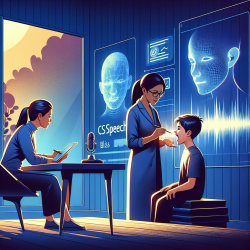Understanding Microbiologically Influenced Corrosion (MIC) and Its Implications for Interdisciplinary Collaboration
Microbiologically Influenced Corrosion (MIC) is a complex phenomenon where microorganisms contribute to the corrosion of materials, particularly metals. This topic, though seemingly distant from the field of speech-language pathology, offers valuable lessons in interdisciplinary collaboration and data-driven decision-making that can enhance outcomes in diverse fields, including ours.
The Core of MIC Research
The research article "Microbiologically influenced corrosion—more than just microorganisms" highlights the fragmented nature of MIC research and the need for interdisciplinary approaches. MIC affects various materials and sectors, and its understanding requires insights from microbiology, material science, chemistry, and engineering. The article emphasizes the importance of integrating non-biological aspects to advance the understanding and management of MIC.
Lessons for Speech Language Pathologists
As practitioners focused on creating positive outcomes for children, speech-language pathologists can draw parallels from MIC research. Here are some key takeaways:
- Interdisciplinary Collaboration: Just as MIC requires collaboration across disciplines, improving child outcomes often involves working with educators, psychologists, and healthcare providers. Embracing diverse perspectives can lead to more comprehensive and effective interventions.
- Data-Driven Decisions: MIC research underscores the importance of using multiple lines of evidence to diagnose and address issues. In speech-language pathology, utilizing data from assessments, observations, and family input can guide targeted interventions.
- Continuous Learning and Adaptation: The evolving understanding of MIC highlights the need for ongoing learning and adaptation. Similarly, staying informed about the latest research and best practices in speech-language pathology ensures that interventions remain effective and relevant.
Encouraging Further Research
The interdisciplinary approach advocated in MIC research encourages us to explore beyond our traditional boundaries. For speech-language pathologists, this might mean investigating how environmental factors, such as classroom acoustics or social dynamics, influence communication development. Engaging in research that crosses disciplinary lines can lead to innovative solutions and improved outcomes for children.
Conclusion
The insights from MIC research serve as a reminder of the power of interdisciplinary collaboration and data-driven approaches. By applying these principles, speech-language pathologists can enhance their practice and contribute to the broader goal of improving child outcomes.
To read the original research paper, please follow this link: Microbiologically influenced corrosion—more than just microorganisms.










